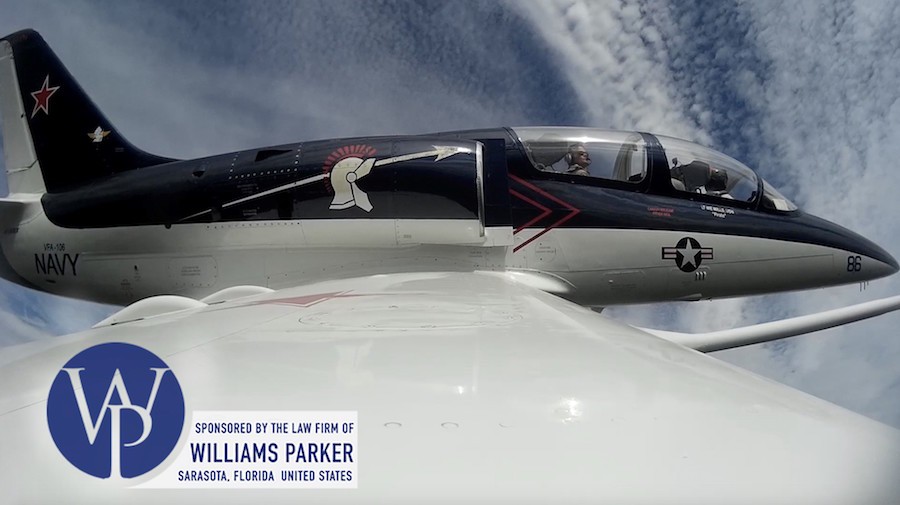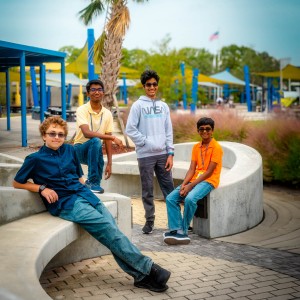From the Cockpit Part 17: Aero L-39 Albatros
Todays News
SRQ DAILY FRESHLY SQUEEZED CONTENT EVERY MORNING
THURSDAY APR 27, 2017 |
BY PHILIP LEDERER
Pictured: Ryan Rankin and Bill Mills fly the Aero L-39 Albatros. Photo courtesy of Ryan Rankin.
Editor’s Note: This is part 17 of an ongoing series documenting the flights of active-duty US Navy Pilot Ryan Rankin on his journey to fly 52 planes in 52 weeks through the year 2017.
Feeding the need for speed, Rankin steps behind the stick of an Aero L-39 Albatros, taking off from Palm Beach with former Navy F-18 pilot Bill Mills. A jet-engine aircraft developed in Czechoslovakia, the L-39 remains the most produced high-performance military jet training aircraft around and one of the few accessible craft of its kind. Propeller-driven craft have dominated Rankin’s From The Cockpit flights thus far, and, though he flies aerobatic jets for the Navy nearly every day, this ubiquitous trainer held a spot on his most anticipated flights for the year.
It’s a much smoother flight, he says, without the vibrations and buzz of the propeller filling the cockpit and shaking the plane. And there’s no p-factor (rotational forces of the propeller on the body of the plane) to counteract, lessening the pilot workload. But it’s also much faster. “You have to be ahead of the aircraft,” says Rankin. “Everything just happens a little quicker.” This may not mean much when simply flying from Point A to Point B, but it requires extra focus with less time for adjustment when landing, looping or flying in formation.
Executing barrel rolls across the sky, a Nanchang CJ-6 pulls up alongside Rankin and Mills, piloted by Mills’ friend. Taking the stick, Mills flies in formation with the Nanchang. Rankin is no stranger to formation flying, but leaves this run to Mills. “Because they’re all different,” says Rankin. “Every time you fly a new airplane in formation, you have to learn how to fly that plane in formation.” Formation flying may look easy to the untrained eye—like staying in your lane on the freeway—but is actually quite complex, particularly when the planes involved have different capacities. Throw aerobatics in to the mix and an untrained pilot is a recipe for disaster.
There’s always an element of danger to flying and no defiance of gravity should be taken too lightly. Nerves are a part of every flight, Rankin admits, but so is overcoming that trepidation and taking to the skies. “You don’t think about the hazard,” he says. “Your brain is laser-focused on the task at hand and you’re just in that flow-state.” It’s the same concentration that allows him to land a jet on an aircraft carrier in a storm under a moonless night. “It’s addicting,” Rankin says. “The more you do it, the more you want to experience that and push those limits.”
For more about the flight in Rankin's own words and a video of the flight, follow the link below.
Pictured: Ryan Rankin and Bill Mills fly the Aero L-39 Albatros. Photo courtesy of Ryan Rankin.
« View The Thursday Apr 27, 2017 SRQ Daily Edition
« Back To SRQ Daily Archive












